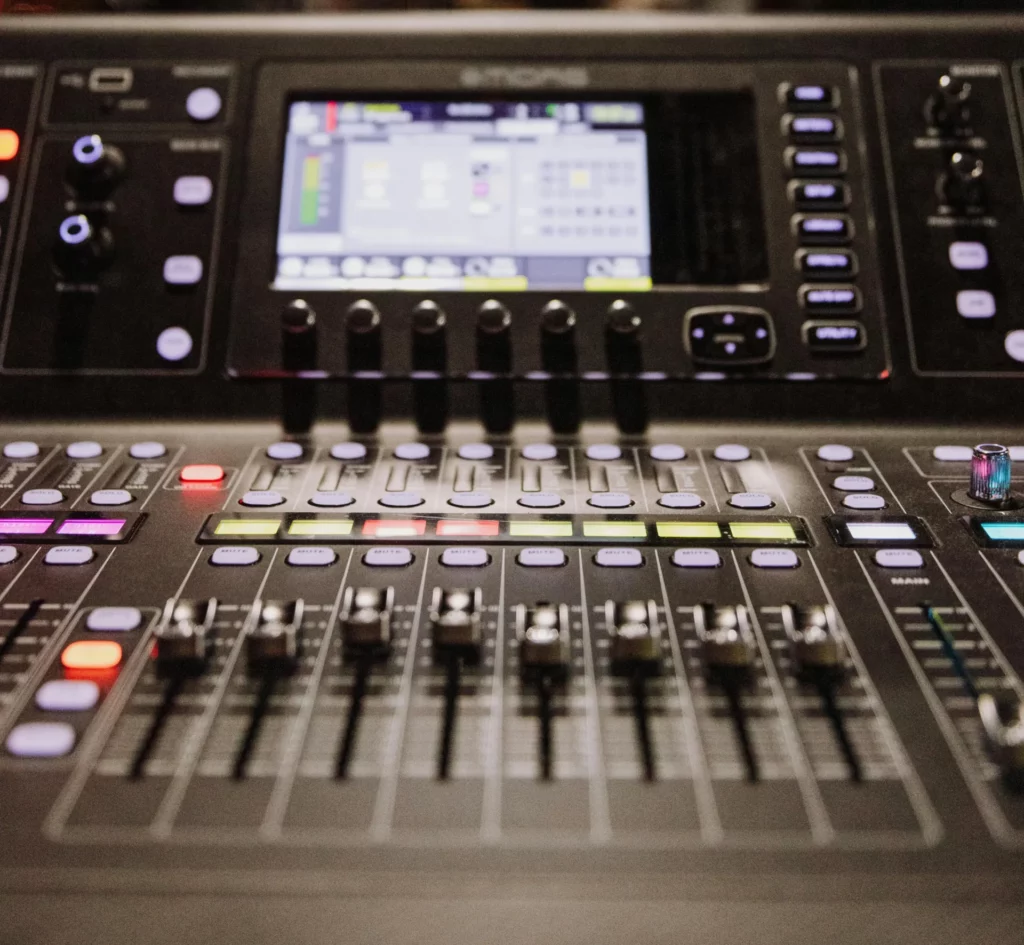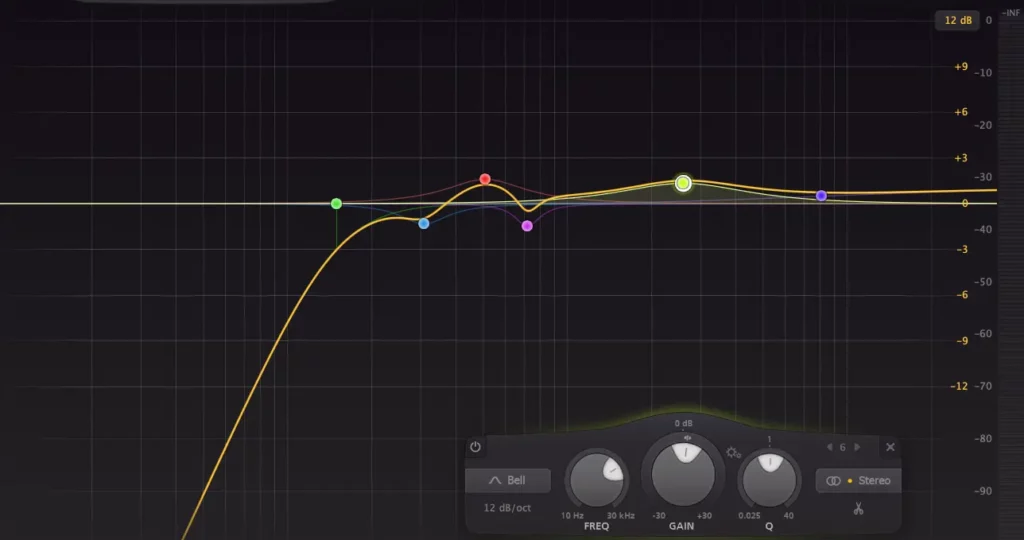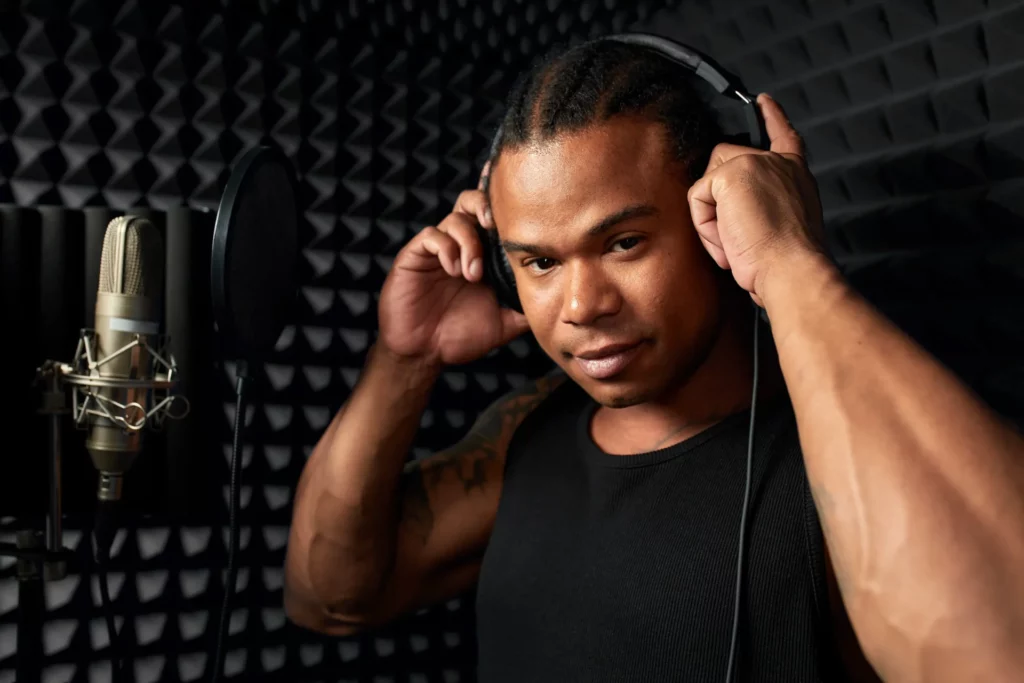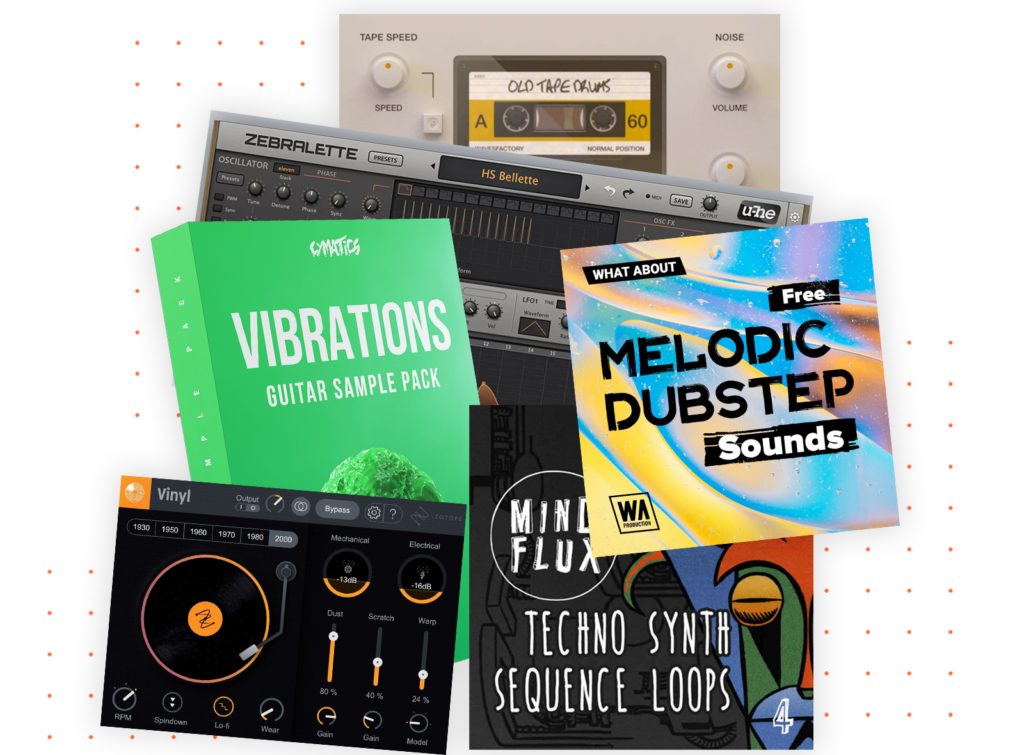Equalization shapes rap vocals by boosting clarity, presence, and punch in a track. Without the right EQ, vocals can sound muddy or weak, losing their power and emotion. From personal experience, dialing in the perfect frequencies can bring vocals to life, making them jump out like a bold headline. Did you know that cutting just a few decibels around 200 to 400 Hz can clear up boxy sounds that hide words? This trick helps listeners catch every rhyme and flow with ease. Anyone mixing rap tracks, from bedroom producers to seasoned beat makers, gains a huge edge by mastering EQ. Keep reading to discover how to make rap vocals stand tall above the beat, grabbing attention and hitting hard every time.
In this article, we’ll cover everything you need to know to EQ your Rap Vocals.
Let’s get started!
Preparing Rap Vocals for EQ
Before we discuss EQ for rap vocals, it’s crucial to get a high-quality recording first.
Let’s talk about how you can get a quality recording.
To capture clean and clear vocal recordings:
- Use a high-quality microphone suitable for the rapper’s voice.
- Record in a treated room to minimize unwanted reflections and background noise.
- Ensure proper microphone technique and maintain consistent distance and positioning.
Common issues in raw rap vocals that can be addressed with EQ include:
- Excessive low-end rumble or muddiness.
- Harsh or sibilant high frequencies.
- Nasal or boxy mid-range frequencies.
EQ Techniques for Rap Vocals

Our main technique for EQing rap vocals is using Subtractive and Additive EQing.
Subtractive EQ involves removing unwanted frequencies to clean up the vocal track.
This can help reduce muddiness, harshness, or other frequency buildups that may clash with other elements in the mix.
Additive EQ, on the other hand, involves boosting certain frequencies to enhance the desired characteristics of the vocals, such as clarity, presence, or warmth.
Here is a chart of te various frequency ranges and how they relate to rap vocals.
| Frequency Range | Description |
|---|---|
| 80-200 Hz | Low-end fullness and body. |
| 200-500 Hz | Warmth and depth. |
| 500-2000 Hz | Clarity and intelligibility. |
| 2000-5000 Hz | Presence and articulation. |
| 5000-10000 Hz | Airiness and sparkle. |
We can use this chart to make informed decisions on what frequency ranges to use subtractive and additive EQing.
Let’s now put all this together and cover a step by step example on how to EQ rap voals
Step by Step Example of EQing Rap Vocals

1. High-Pass Filter
Apply a high-pass filter to remove low-end rumble and noise.
Set the filter to around 150Hz to clean up the low frequencies without affecting the vocal’s clarity.
2. Attenuate Problem Frequencies
Identify and attenuate problematic frequencies.
Common areas to look at include:
- 300Hz: Use a bell curve to attenuate this frequency to reduce muddiness.
- 700Hz: Attenuate this frequency to remove boxiness.
3. Boost Presence Frequencies
- Boost frequencies that enhance the vocal’s presence and intelligibility:
- 500Hz: Use a bell curve to slightly boost this frequency for warmth.
- 2.5 to 3kHz: Boost this range to make the vocal more present and clear.
4. Air Shelf
Apply an air shelf to boost the high-end frequencies, typically starting around 8kHz.
This adds brightness and clarity to the vocal.
5. De-Essing
Use a de-esser to tame harsh sibilance. Sweep a tight boost to locate sibilant frequencies, usually between 5kHz and 8kHz, and then set the de-esser to reduce these frequencies.
6. Saturation
Apply frequency-specific saturation to add warmth and harmonics.
For rap vocals, clear vocals often win out over warm or full vocals, so use a high quality saturation plugin to distort high frequencies and create higher-order harmonics.
7. Parallel Compression
Create a parallel send or aux track for the vocals. I
nsert a compressor or saturator and heavily compress or saturate the signal.
Blend the parallel signal back in via the channel fader to include just the right amount of compressed high frequencies.
8. Reverb and Delay
Use short reverb times to thicken the vocal sound.
Apply both ambient and room reverb, and a subtle long reverb with boosted high frequencies for an airy sound.
For delay, use a short delay that syncs to the host BPM, typically set to a 1/64th note, to make the vocal more present.
By following these steps, you can achieve a professional-sounding rap vocal mix that stands out in the mix and complements the instrumental.
Common EQ Settings for Different Rap Vocal Styles

- Aggressive and upfront rap vocals: These rap vocals focus on boosting the mid-range (1-3 kHz) for clarity and presence, while slightly cutting the low-mids (200-500 Hz) to reduce muddiness.
- Smooth and melodic rap vocals: These may benefit from a gentler high-end boost (6-10 kHz) for airiness and a subtle low-mid boost (200-400 Hz) for warmth.
- Ad-libs and background vocals: consider their placement in the stereo field and frequency spectrum. Think more subtractive EQing and heavier use of delay and reverb. High-pass filtering and a slight mid-range cut can help them sit behind the lead vocals without cluttering the mix.
Using EQ in Context with Other Mixing Tools
EQ and compression work hand in hand when mixing rap vocals.
EQ can be used to shape the frequency balance before or after compression, depending on the desired effect.
Reverb and delay can also be shaped by EQ to achieve the desired tonal character and spatial placement of the vocals.
High-pass filtering the reverb or delay returns can prevent muddiness and maintain clarity.
Parallel processing involves blending the processed and unprocessed vocal signals, allowing for greater control over the perceived texture and impact of the vocals.
Example of Good Rap Vocal EQing
Analyzing the EQ settings in popular rap songs can provide valuable insights into effective vocal mixing techniques.
For example, in Kendrick Lamar’s “HUMBLE”, the lead vocals have a strong presence in the mid-range, with a slight boost around 1-2 kHz for clarity and a subtle high-end shelf for air.

Access 4,000+ Music Tools
Access our entire library of music tools including sample packs, VST plugins, DAW templates, and much more.
Tips from Industry Professionals
Experienced sound engineers offer valuable advice on EQing rap vocals:
- “Start with subtractive EQ to clean up the vocals before boosting frequencies.” – Derek “MixedByAli” Ali
- “Be mindful of the vocal’s placement in the frequency spectrum in relation to other elements in the mix.” – Leslie Brathwaite
- “Use EQ to enhance the natural characteristics of the rapper’s voice, not to drastically change it.” – Jaycen Joshua
Save Money with Music Production Tools!

Why spend hundreds or even thousands of dollars on music production tools when you can access them all for a low monthly fee at SoundShockAudio?
Subscribe now and start creating professional-sounding music without breaking the bank. We’ve got everything from sample packs, to VST plugins, and more.
Still having trouble with EQing?
View all our other EQing tutorials below:




hey, for the EQ Techniques for Rap Vocals, does it cover how to deal with sibilance specifically? always struggle with that.
Really appreciated the insights on preparing rap vocals for EQ. It’s a step often overlooked but so crucial.
when you said high quality EQ VST plugins, you meant those free ones on the internet, right? haha, jk, spending money hurts.
beat_b0y83, you get what you pay for, buddy. Invest in good plugins and your music will thank you.
The section on advanced EQ strategies offers some fascinating techniques. Implementing a few has already enhanced my mixing process.
not every vocal track needs to get drowned in EQ, sometimes raw is better. this seems to push towards over-production.
I see your point rhymenreason47, but the modern sound often demands a polished finish that EQ helps achieve.
guess that’s fair, TrueTone, gotta adapt to stay relevant.
using EQ in context with other mixing tools seems a bit daunting at first. Hoping practice makes perfect.
i dunno, feels like this article is making EQ way more complicated than it needs to be. simpler = better imo.
Daniel, is there a section on how EQ settings might differ when mastering for vinyl? That’s a niche concern but quite important for audiophiles.